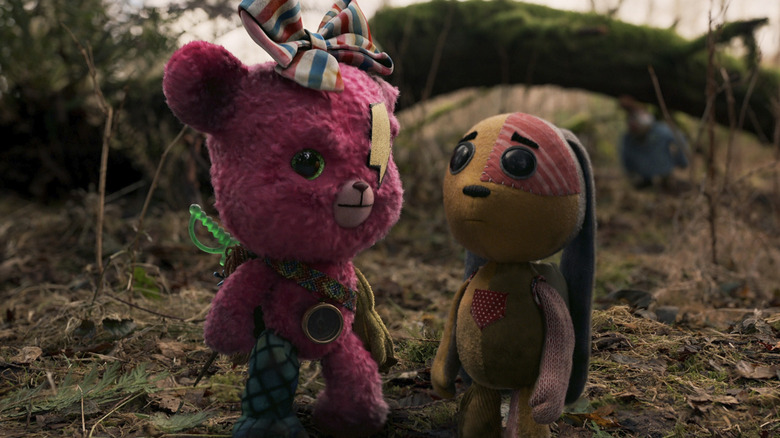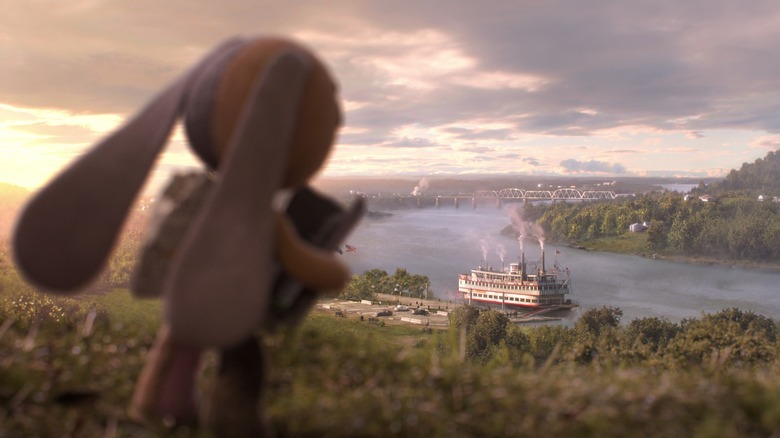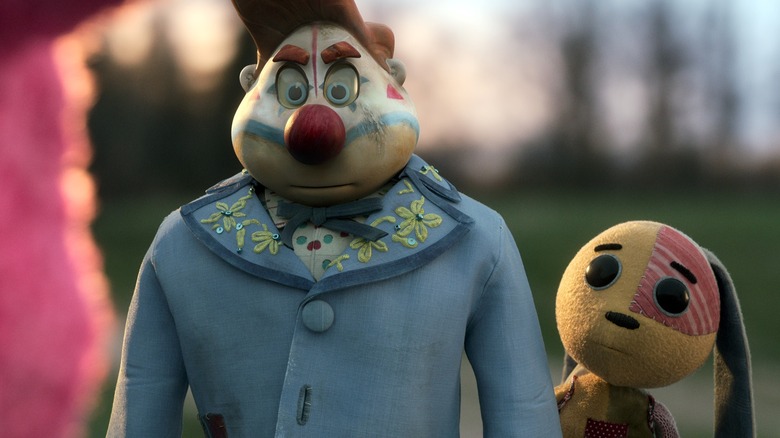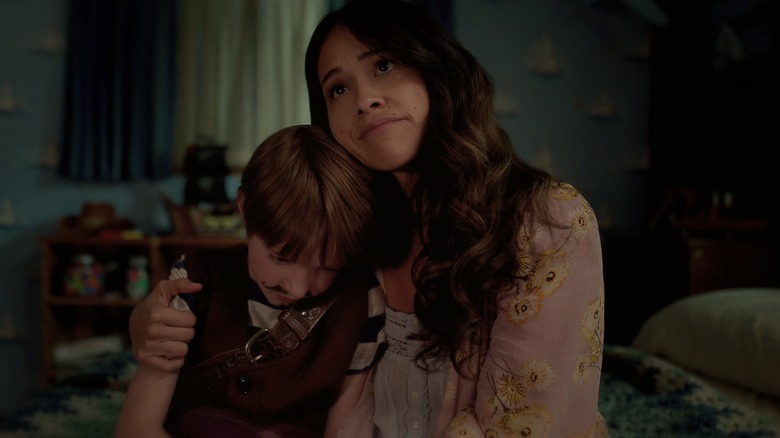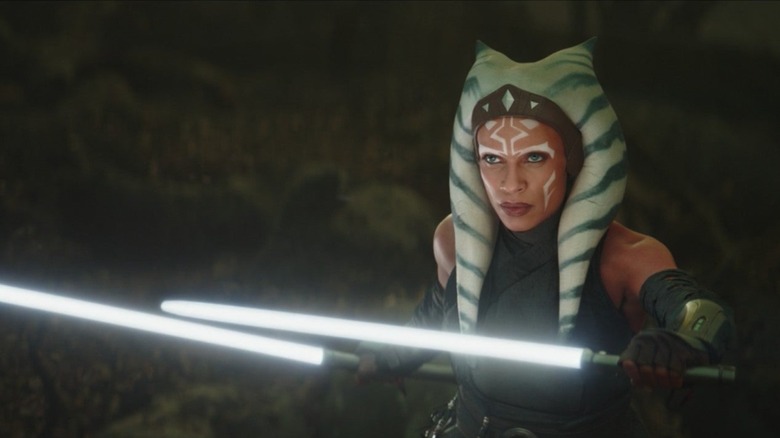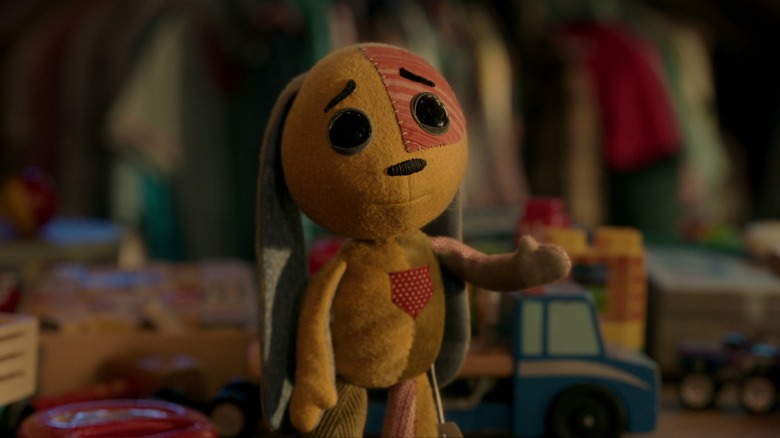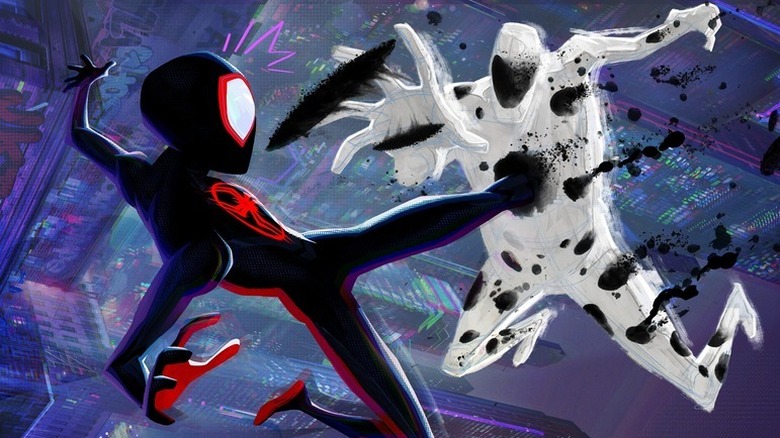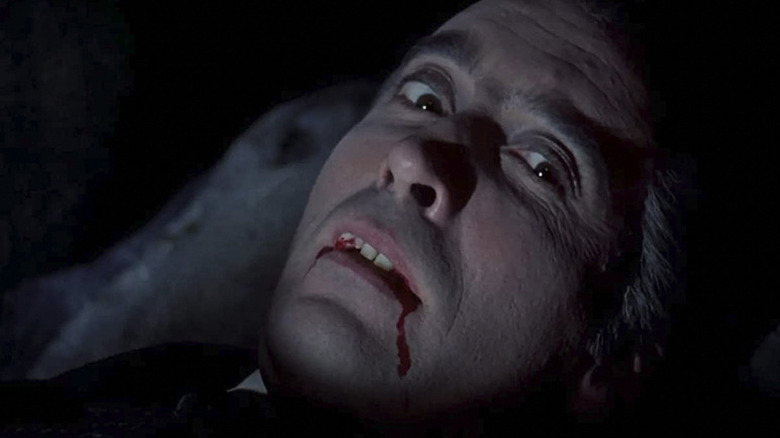Lost Ollie Director Peter Ramsey On Treating VFX Teams Like True Collaborators [Exclusive Interview]
"Lost Ollie" is a new animation/live-action hybrid show that tells the story of a lost patchwork bunny embarking on a fantastical adventure to try and reunite with his best friend, a human boy named Billy. Along the way, he faces wonders, horrors, betrayal, action, and more. In her review for /Film, Shania Russell wrote: "'Lost Ollie' doesn't need to be a grand epic or end-of-the-world type quest. It's still a beautiful reminder of what it feels like to be wandering and what it truly means to find your way home."
The show may tread familiar ground compared to stories in "Toy Story" or "The Velveteen Rabbit," but it manages to stand out thanks to great animation from ILM and a series of emotional gut punches that hit as hard as any Pixar movie. The show, which was created by Shannon Tindle, also features a great cast that includes Jonathan Groff, Tim Blake Nelson, Mary J. Blige, Gina Rodriguez, and Jake Johnson. But one of the other key factors in its success? The filmmaker behind the camera.
With the show now available on Netflix, /Film spoke with director Peter Ramsey ("Rise of the Guardians," "Spider-Man: Into the Spider-Verse") about working with animation and live-action, the "Spider-Verse" sequel(s), his vampire noir thriller, and more.
Dealing with actors and animators
How did your experience working in animated and live-action projects in the past help when it came to working on "Lost Ollie?"
I was really happy that I had the experience that I did, because I did have a grounding through my early live-action days doing storyboarding and directing a few second units. I'd been on enough sets and knew enough about what it required not to be too intimidated by getting thrown into a live-action production. And then on the animation side, you get a great grounding in some of the technical aspects, but I think even more important than that, the ability to kind of pre-visualize and be able to imagine visually the dramatic beats that you need to achieve in a scene.
You get a lot of good training in that in animation to make things really clear and really specific, so that when you're out there shooting your live-action plates or when you're directing the puppet actors to do the first rough performance pass that we did just to get the camera correct, you know the moments that you're going for. So having a background in both of those, it couldn't have been better preparation for "Lost Ollie."
Did you approach the live-action differently at all? Was there a different methodology from the directing side to doing animation or live-action?
Actually, no. I mean, really, the only difference between the two is process, because when you're directing animated characters, you're doing all the same things that you would if you were dealing with an actual actor. When I'm talking to the animators at ILM to get a performance, I'm treating the animator like an actor. I'm telling them what's motivating them, what action they're performing, what quality that action should have. And you refine it from there. It's like, "You're sad, but it's not desperate sadness. It's more like melancholy." So you really talk to them, and it's almost exactly the same way as you do an actor. I mean, that's the way I like to do it. I don't have a deep technical background in animation, so I'm not the guy who's going to say "Raise this, adjust the line here, and move the eyebrow up 10 pixels." That's not me at all. I'm much more story and performance-based. So for me, there's no difference.
'It should feel like you are at their scale'
Speaking of ILM, how was that collaboration with them as a director, leading the creation of these performances?
From really early on, we worked hand-in-hand with ILM talking about — because you have to talk about, "What's the style of this? Do you want it to feel like two separate worlds, where you've got your live-action actors and then you cut to this cartoony land where these cartoons...?" And we went, "No, we don't want to do that. We want to say there's one world, and sometimes our attention is with the live-action characters, but it just takes us a slight shift of perspective to be with our animated characters, who should feel like they're in the very same world. And they're acting and their motion and the rendering, the way light affects them, everything about it should feel as if they are in that same world."
I think one of the first things I pitched when we talked about it was I wanted the sections where we focused on our animated characters to feel like, if you took a live-action film crew and you shrunk them down to eight inches tall, and you had a little tiny camera, and you had little tiny lights, and a little tiny Steven Spielberg or David Lean or whoever directing the action, that's what it should feel like. When you're in the world with the animated characters it should feel like you are at their scale making something in a real world. So I think starting the discussions there started to dictate the style of the animation, the look that we wanted, and a lot of other things.
'The puppets were just works of art'
There's a big fairy tale vibe to the toy's side of the story. How do you find a balance between that and the more grounded live-action parts?
I know what you mean. And sometimes when I look at some of the shots, I'll have this weird feeling of, "Okay, I feel like this is happening at my scale, but I know that Ollie is only nine inches tall. But I feel so much that I'm in his perspective or in his world." And I think one thing that ILM did that was really great was they were really attentive to the physical details of the puppet models that we had. We had fantastic original puppets, built by Scott Johnson running that team. And they're just absolutely beautiful.
The puppets were just works of art. And ILM was so faithful in recreating the materials and how the materials would bend and fold, how light would interact with them. So it does take you into this halfway sort of world where it's like, "Yes, I know they're toys, but on the other hand, they have weight, and I'm reading their emotions, I'm feeling their intentions." And I know when I watch, I think I sort of switched back and forth between real and not real, real and not real. And it's this real interesting feeling that I can't remember if I've ever really seen it before. It's a really different sensation.
'It's all about treating our visual effects partners as real collaborative partners'
Because of how much animation and effects are in this live-action show, did that help when you joined something like "Ahsoka," a big franchise with tons of visual effects?
For me, it always keeps boiling down to the same thing, which is, what story are we telling? It's really about clarity. It's about making sure everybody understands the aesthetic and the world and the vibe that you're going for, so it's an ongoing discussion that you have to keep having. And that means you have to be a real collaborator for it to work smoothly. Shannon and I both really strongly believe, we're working with these people. They're not just parts in a machine working for us. It's a back and forth. These are artistic collaborators, and they're bringing a lot to the table.
It's unbelievable the amount of creativity that happens. We ask ILM for something, or we pitch an idea, Hayden [Jones] and the team, they come back with, "Well, we tried this, and then we tried this and we did this." And there's so much that they bring, and it just gives birth to 10 million new ideas. So for us, it's all about collaboration. It's all about treating our visual effects partners as real collaborative partners. I think that's when you start getting something that feels as rich and as heartfelt as the work in "Ollie" does.
Making audiences laugh and cry
Both "Lost Ollie" and "Rise of the Guardians" are based on the works of William Joyce and deal with heavy subjects without talking down to the audience. As a director, how do you find a balance in how much to push the emotion without overwhelming the fun and the laughs?
I feel more comfortable in that range of storytelling than I do with something that's just pure straight comedy — which, of course, I love, and it's fantastic, and it's also very hard. But the things that move me emotionally are the things that don't shy completely away from these more difficult things. And it's one thing that drew me to "Ollie" really early on. Shannon and I, we show each other our writing on various projects or whatever, and just reading the early stuff on "Ollie," and knowing where he wanted to go with it I thought, "Wow, this is like..."
I'll put it this way. In my animation career, funny animals or little stuffed toys coming to life wasn't really my thing. It's kind of like, eh, I don't come out of that side of the animation tradition at all, really. So the thought that something like "Ollie" could captivate me as much as it did when I read it, and to inspire me as much as it did as we were making it, and to totally be able to commit to and dive into that world says a lot about the vision that Shannon had for it.
'The secret weapon of the Spider-Verse movies'
Audiences are way more familiar with the concept of the multiverse compared to when the first "Spider-Verse" movie came out. Does that change your approach to "Spider-Man: Across The Spider-Verse" and what you want to show or do?
I don't know if it really changes it, I mean, because we had done the first movie, so I think everyone knew, "Okay, well, we can have more fun with the multiverse, but the concept is out there now." So if you're still doing that and nothing more, then you're going to have some problems. So really, I think the first "Spider-Verse," the thing that audiences really fell in love with was Miles. And I think, without saying too much about what's happening in the new one, which is going to be super cool, you're going to see a real continuation and deepening of Miles' story. And I think, just the notion that you're going to see all this fantastical stuff, and there's a lot about the multiverse still to come, but the idea that you're experiencing it with and through Miles, I think, is the secret weapon of the "Spider-Verse" movies. And as long as they stick to that, it'll be great.
'If you actually came across a vampire somehow in your everyday life as you live it now, what would that actually be like?'
Vampires have gotten a somewhat comedic connotation in recent years. When you first came up with the concept for "Blood Count," what was your goal or north star in reclaiming the scares and thrills of the vampire story?
The very first inspiration for "Blood Count" was a conversation I had with my brother, Eric. It was years ago. And we had probably seen some horror movie. It may have been a vampire movie, I don't know. But we were like, "Yeah, it's whatever, blah, blah, blah," and the notion of, "I wish I could see one of these where it really felt like this was actually happening to somebody in their real life. If you actually came across a vampire somehow in your everyday life as you live it now, what would that actually be like? What would it feel like? What if you were the only person who knew what was going on and you knew nobody else would ever believe you when you told them a vampire did that?"
That was the seed of the idea for me, to sort of build out from there into a world where an ordinary person, living their ordinary life, suddenly has to deal with the reality of a whole other ... it's almost like a multiverse. This whole other reality of the supernatural pressing up against them and starting to affect their life. That was the core of the idea. So hopefully, the interesting stuff in "Blood Count" comes out of that perspective. That it's, "Wow, if this actually happened in your life and you had to deal with it, what would it feel like?"
"Lost Ollie" is streaming now on Netflix.
